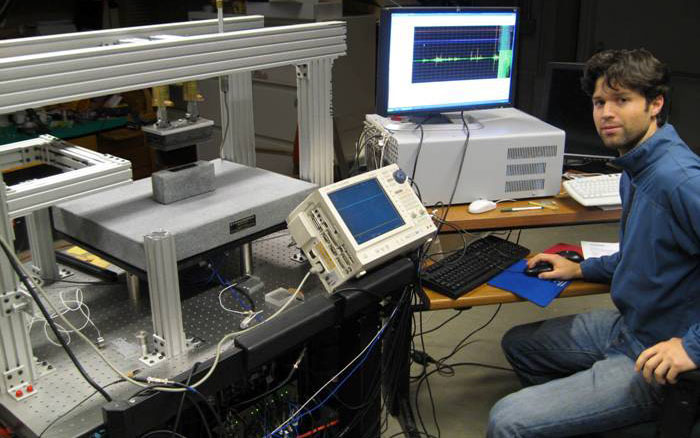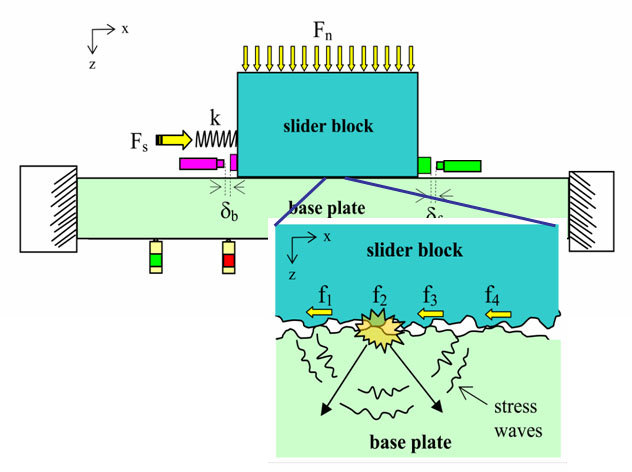Micromechanics of Friction Project

In this project we carefully analyzed the high frequency seismic waves (nanoseismic waves) emanating from a laboratory-scale frictional interface. We found that seismic radiation occurs in discrete bursts. Using an array of thirteen Glaser-type sensors, we were able to study the focal mechanism and force time history of the discrete events, which we interpret to be rupture or fracture of asperities. The rapid rise time (~1 us) of recorded waves enables spatio-temporal location of the sources to be resolved to ~1 mm/ ~1 us accuracy. The evolution of asperity rupture is mapped as the interface transitions from "stick" to "slip," which provides clues to the micromechanics of friction and the dynamics of fault rupture and the production of earthquakes.
We have done sliding friction experiments on both plastic (PMMA) and rock (granite). Our shear apparatus, shown above and depicted schematically below, is instrumented with pm-scale sensitivity broadband (~8kHz - ~3MHz) displacement sensors. The recorded signals can be modeled using seismic source representation theory and generalized ray theory. The synthetic seismograms calculated by such models are shown below as the thick lines. The system is absolutely calibrated using both the impact of a tiny (~1 mm) ball on the surface of the specimens and the sudden fracture of a thin-walled glass capillary tube loaded on its side. See the ball impact and sensor calibration section for more details about system calibration.
More information about these topics can be found in the following papers:
McLaskey, G., and Glaser, S. (2011) Micromechanics of asperity rupture during laboratory stick slip experiments, Geophysical Research Letters, 38, L12302. pdf
McLaskey, G., Glaser, S., (2010) "Mechanisms of sliding friction studied with an array of industrial conical piezoelectric sensors," in: M. Tomizuka, C. Yun, V. Giurgiutiu (Eds.), Proc. SPIE pdf

